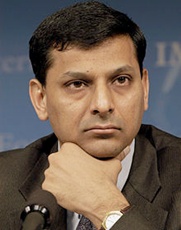RBI keeps rates unchanged, awaits banks’ response to previous cuts
07 Apr 2015
 The Reserve Bank of India (RBI) has decided to keep policy rates unchanged amidst signs of an undying inflationary trend and uneven growth in the economy and a slight volatility seen in the currency market.
The Reserve Bank of India (RBI) has decided to keep policy rates unchanged amidst signs of an undying inflationary trend and uneven growth in the economy and a slight volatility seen in the currency market.
RBI said it would continue with an accommodative monetary policy, but its monetary policy actions will be conditioned by banks passing on the gains of earlier rate reductions of January and February through their lending rates.
Also, RBI said, it would closely watch developments in sectoral prices, especially movements in food prices.
On an assessment of the current and evolving macroeconomic situation, RBI said, it has decided to keep the policy repo rate under the liquidity adjustment facility (LAF) unchanged at 7.5 per cent.
The cash reserve ratio (CRR) that scheduled banks have to deposit with the central bank has also been kept unchanged at 4.0 per cent of their net demand and time liability (NDTL).
The central bank said it would continue to provide liquidity under overnight repos at 0.25 per cent of bank-wise NDTL at the LAF repo rate and liquidity under 7-day and 14-day term repos of up to 0.75 per cent of NDTL of the banking system through auctions and continue with daily variable rate repos and reverse repos to smooth liquidity.
Consequently, the reverse repo rate under the LAF will remain unchanged at 6.5 per cent, and the marginal standing facility (MSF) rate and the Bank Rate at 8.5 per cent, RBI said.
RBI said while it would maintain an accommodative monetary policy stance, its monetary policy actions will be conditioned by incoming data on the transmission by banks of its front-loaded rate reductions in January and February into their lending rates.
Also, RBI said, it would closely watch developments in sectoral prices, especially those of food, as will the effects of recent weather disturbances and the likely strength of the monsoon.
It would also look to a continuation and even acceleration of policy efforts to unclog the supply response so as to make available key inputs such as power and land.
RBI has proposed increased diversion of public spending from poorly targeted subsidies towards public investment and reducing the pipeline of stalled investment, which, it said, would be helpful in containing supply constraints and creating room for monetary accommodation.
Also, with the US economy back on the growth path and the Ferderal Reserve signalling a return to normalcy in its monetary policy actions, RBI said it would watch for any eventuality, though India is now better buffered against likely volatility than in the past.
RBI expects domestic economic activity to have strengthened in Q4 of 2014-15, and as advance estimates now suggest the contraction in food grains production in 2014-15 may turn out to be less than earlier anticipated. However, there could still be some adverse impact of unseasonal rains and hailstorms in March.
In the industrial sector, manufacturing appears to be regaining momentum, with the growth of production in positive territory for three consecutive months till January.
RBI noted that retail inflation based on the revised consumer price index (CPI) firmed up for the third successive month in February as favourable base effects dissipated, despite the price index remaining virtually flat since December.
This has mainly been due to still elevated levels of prices of protein-rich items such as pulses, meat, fish and milk, which kept overall food inflation from declining, it added.
The most worrying fact, according to RBI, is that banks have so far not passed on the gains of earlier reductions in policy rates to lending rates, despite weak credit off take and the front loading of two rate cuts.
''With little transmission, and the possibility that incoming data will provide more clarity on the balance of risks on inflation, the Reserve Bank will maintain status quo in its monetary policy stance in this review,'' it said.
RBI said it would keep focused on the Monetary Policy Framework Agreement signed with the Government of India in February 2015 and that it would shape the stance of monetary policy in 2015-16 and succeeding years.
RBI said it would ensure that the economy disinflates gradually and durably, with CPI inflation targeted at 6 per cent by January 2016 and at 4 per cent by the end of 2017-18.
The target for end-2017-18 and thereafter is set at a tolerance band of +/- 2 per cent around the mid-point.
The outlook for growth is improving gradually. Comfortable liquidity conditions should enable banks to transmit the recent reductions in the policy rate into their lending rates, thereby improving financing conditions for the productive sectors of the economy.
Assuming a normal monsoon, continuation of the cyclical upturn in a supportive policy environment, and no major structural change or supply shocks, output growth for 2015-16 is projected at 7.8 per cent, higher by 30 bps from 7.5 per cent in 2014-15, but with a downward bias to reflect the still subdued indicators of economic activity.







.webp)














